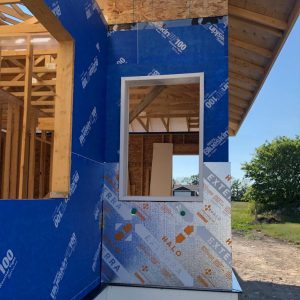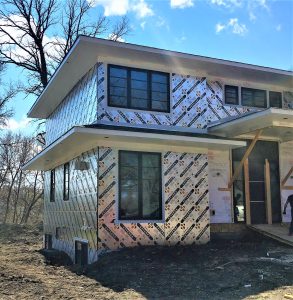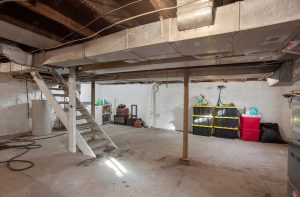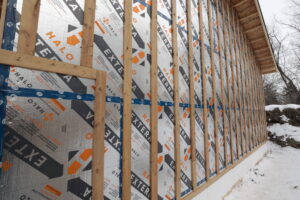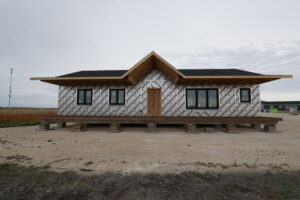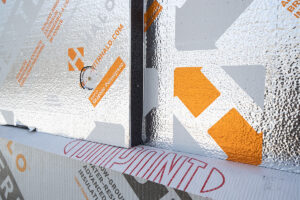Do you worry about exposing foam board insulation to the outdoors? Or leaving it uncovered inside a home?
In this post, we will explore the perils of exterior and interior exposure, and how 3 common rigid insulation products perform in this regard.
Can I Leave Foam Board Insulation Exposed on Exterior Walls?
When exposed outdoors, foam board insulation can see damage from the Sun’s ultraviolet (UV) rays. Rays reflected from a surface, like a nearby window, can be particularly damaging to foam boards.
But not all foam board insulation products perform in the same manner when subjected to UV rays. Some come equipped with a protective laminate surface on both sides. Tests have shown that these laminated boards can withstand UV ray damage for a reasonably long time. That said, it’s still advisable to cover any foam board insulation exposed to the Sun within 30-60 days at the most. On most projects, that’s more than enough time to finish the exterior walls.
Can I Leave Foam Board Insulation Exposed on Interior Walls?
While there are no UV rays to destroy the foam board’s insulative properties, interior exposure can create a fire hazard. Therefore, to qualify a building for an occupancy permit, most jurisdictions in North America demand that a thermal barrier, like drywall, cover the foam board.
In the United States, there’s an exception to this code standard for foam board products that pass the NFPA 286 test.
With all this in mind, let’s see how 3 everyday foam board insulation products perform when left exposed on the exterior and interior of a wall assembly.
Halo Graphite Insulation System
The Halo® system comprises a high-performance, low carbon, graphite polystyrene (GPS) core, with a range of protective laminate surfaces, each tailored to a specific application.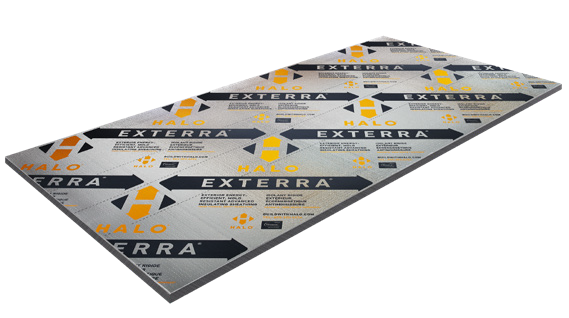
Exterior Application
The Halo’s Exterra and Subterra, designed for exterior and under-slab use, respectively, are coated with layers of laminate that afford protection from UV rays and water.
The photos below show both products in UV ray exposure testing in Florida. Both specimens were left open to the elements for 12 weeks and saw only minor ink fading as a result. Thanks to the protective laminate coating, the test didn’t record any UV-related degradation in the foam core.
Despite these impressive test results, please note that these products are not designed to withstand UV rays and water forever and, to be safe, should be covered within 30 days of installation.
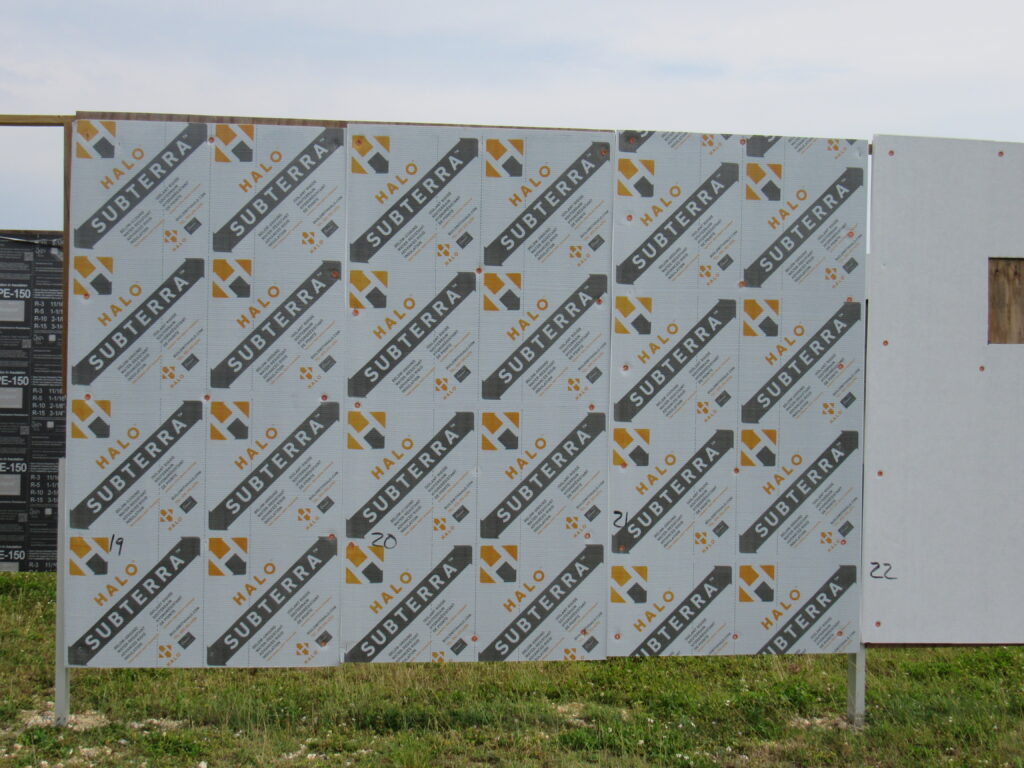
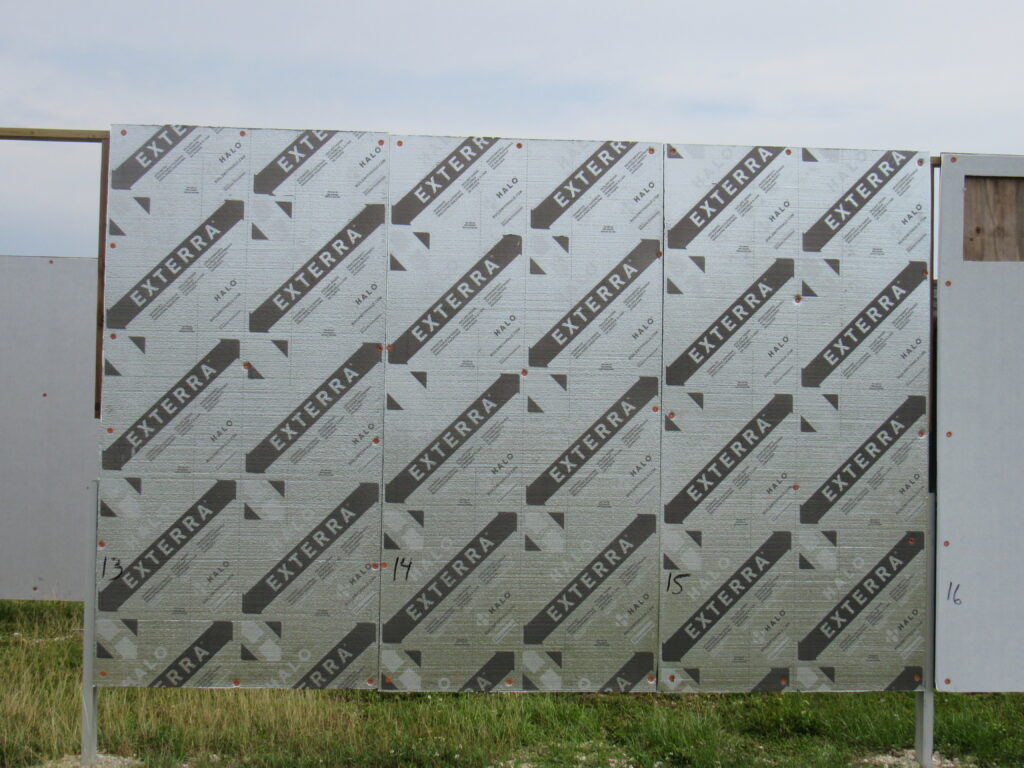
Interior Application
Generally, Halo Interra insulation installed on interior walls should be covered.
However, as we’ve said before, a number of jurisdictions in the US allow exposed foam board insulation inside a building if they’ve passed NFPA 286 testing. The International Building Code (IBC) 2015 exemption applies to residential and commercial buildings only.
Halo’s Interra Plus has passed this required testing and can be left uncovered on the interior, provided the boards are not more than 2.28 inches wide.
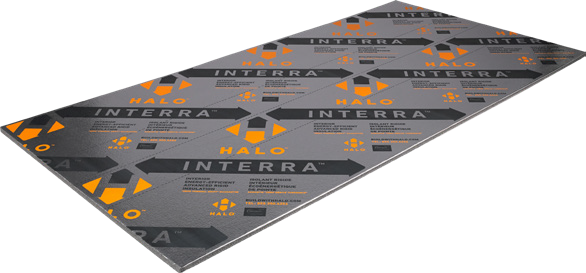
XPS Foam Board
Exterior Application
XPS boards are susceptible to UV ray exposure. Left uncovered these boards’ physical and insulative properties begin to weaken. First, their color fades, then the foam core suffers from powder chalking, and finally, the R-values deteriorate. To protect XPS foam boards from degradation, they must be covered within 60 days at the most.
Interior Application
Most interior XPS boards must be covered with an accepted thermal barrier. Some XPS products have passed the NFPA 286 testing and don’t require a thermal barrier; check with your manufacturer to see which XPS products are exempt.
Mineral Wool Board
Exterior Application
While polystyrene foam cores are susceptible to UV rays, mineral wool boards suffer the most from water. That’s why water exposure is a significant concern when mineral wool boards are left uncovered outside. If these boards get wet, they must be thoroughly dried before getting enclosed in a wall cavity, or they risk losing their performance and R-value.
Interior Application
Mineral wool boards are not widely used for interior application.
Wrapping it up
While all insulation boards can suffer damage from exterior exposure to UV rays and water, some fare better than others. Panels with a protective laminate, like Halo’s Exterra and Subterra, do a better job of reflecting the Sun’s harmful rays and water. That said, none are designed for prolonged exposure to the elements and must be covered up within 60 days at the most.
On the warm side of a wall assembly, exposed boards typically pose a fire hazard, and need a thermal barrier to meet the code. That said, products like Halo Interra Plus are exempt from this code requirement, and don’t need a thermal barrier.

